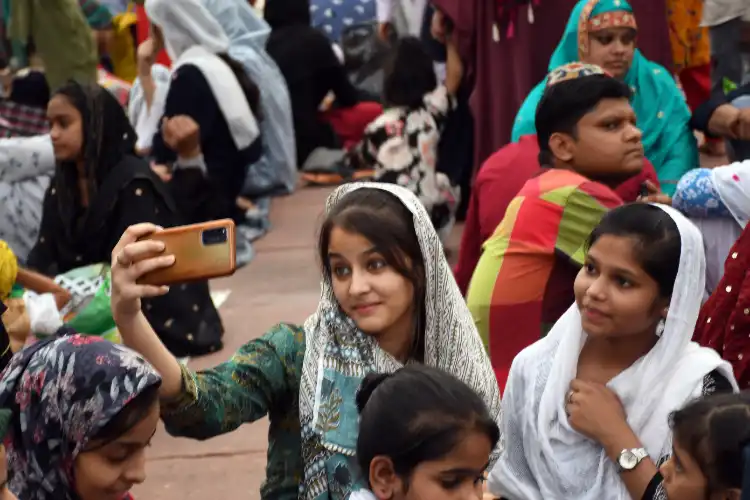
New Delhi
India sits on a powder-keg as far as anemia, generally understood as a lack of blood – a vital health parameter and an indicator of the nutritional levels in our food – among women is concerned. In India 53 percent of women in the age group 15-49 were anemic. Of these 54 percent were Hindu women and 50 percent of Muslim women (2015-16).
That way, there is not much difference in the health status and nutritional levels of women in India’s two largest communities.
This is the conclusion of recent research conducted by Shama Firdous and Pinaki Das of the Economics department of the Vidyasagar University in Midnapore -The health status of Muslim women across the States of India – a comparative analysis. The analysis is based on data from the NFHS (National Family health services) 3rd and 4th round data.
The study says anemic prevalence has hardly changed in the 10 years decreasing from 55 percent in 2005-06 to 53 percent in 2015-16. There has been the least decline among the Hindu and Muslim women too. In 2015-16 Odisha showed the highest difference between the Hindu and Muslim women’s conditions of anemia. Here, a lesser number of Muslim women were anemic than Hindu women. In the case of Haryana, the reverse situation prevailed. In States like Jharkhand and Chattisgarh, Hindu women outnumbered Muslim women as far as anemia is concerned.
However, in States like Uttrakhand, Jammu & Kashmir, and Uttar Pradesh the proportion of Muslim women who were anemic outnumbered Hindu women.
In other health-related parameters, across India, 74 percent of Hindu women and 75 percent of Muslim women have had better health facilities in the last 10 years. The states like Kerala, Uttarakhand, Jammu and Kashmir had a higher proportion of Hindu women whereas Assam, Jammu and Kashmir, and Rajasthan had a higher percentage of Muslim women having better health facilities.
In comparison, the states like Andhra Pradesh and Jharkhand had the worst health status for Muslim as well as Hindu women.
The study says: "The proportion of Hindu and Muslim women who were anaemic we observe that in 2015-16 Odisha showed the highest difference where Hindu women outnumbered the Muslim"
“Similar situation was observed in Jharkhand, Chhattisgarh, and others. There are a few states like Uttrakhand, Jammu & Kashmir, Uttar Pradesh and others where the proportion of Muslim women who were anemic outnumbered Hindu women.”
Over a decade it has been observed that anemia among women irrespective of religion age 15-49 have been turned down for most of the states like Assam, Jammu & Kashmir, Tripura, Chhattisgarh, and other while Punjab, Kerala, and others showed an increase in the percent of women who were anemic over these 10 years.
Interestingly, Punjab showed the highest increase (anemic women) whereas Assam showed the highest turn down in the proportion of anemic women irrespective of religion.
“There has been a reduction in the percent of women irrespective of religion who were anemic but this reduction is found to be statistically significant only in the case of Muslim and Hindu women of age 15-49 and not for women in general.” In other parameters related to health that were evaluated in this comparative study BMI(Body Mass Index) below normal, BMI above normal (Obese), Women having Anaemia, and Women having high blood sugar.
The study found there was a reduction of 13 percentage points in the percentage of women whose body mass index was below normal in India irrespective of religion. Kerala registered the least and Bihar registered the highest percentage of Muslim women whose BMI was below normal.
Also Read: Good intentions need not be punished
The study found around 6 percent of Indian women had high Random Blood Sugar levels in 2015-16. Tamil Nadu had the highest percentage of Muslim women who had high Random Blood Sugar level where Rajasthan had the least.
